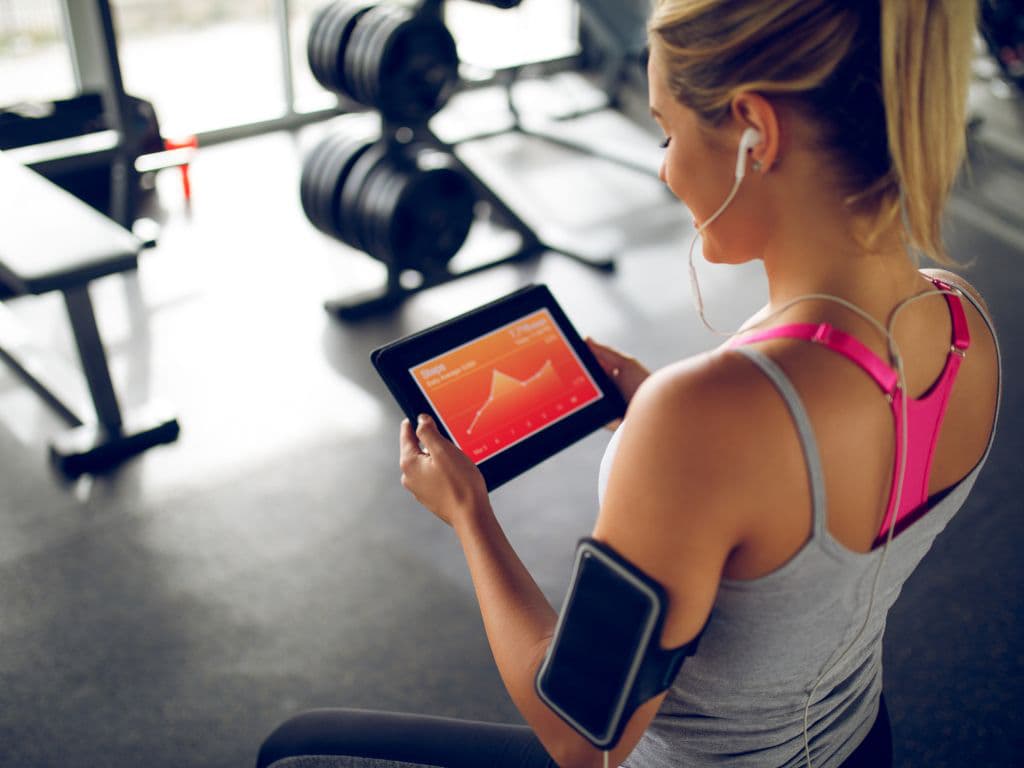In contemporary society, maintaining a healthy lifestyle presents challenges. However, the integration of technology into fitness routines revolutionized the approach to physical activity. Understanding technology’s role in fitness is crucial, as it provides a convenient and efficient means to track physical parameters like steps, calories burned, and heart rate.
Tracking physical parameters holds significant importance. Monitoring these metrics allows individuals to gain insights into their progress, identify areas requiring improvement, and make informed decisions regarding their fitness journey. This data-driven approach empowers individuals to take control of their health and achieve desired fitness goals.
Benefits of Using Fitness Apps
Fitness apps offer a myriad of benefits that enhance the overall fitness experience. One significant advantage is improved accountability and motivation. These apps provide reminders, progress tracking, and social support features, encouraging user commitment to fitness goals.
Another notable benefit involves the ability to access personalized workouts and progress tracking. Many fitness apps offer customized workout plans tailored to individual fitness levels, preferences, and goals. This personalization ensures users receive targeted guidance, maximizing exercise routine effectiveness.
Furthermore, the integration of fitness apps with wearable devices like smartwatches and fitness trackers has become increasingly seamless. This integration allows real-time data synchronization, enabling consistent and accurate monitoring of physical parameters for users.
Choosing the Right Fitness App

With the abundance of fitness apps available, choosing the right one can be a daunting task. To make an informed decision, it is essential to consider factors such as compatibility with your fitness goals, user interface, and integration with other devices or platforms.
When evaluating fitness apps, look for popular features that align with your needs. These may include comprehensive exercise libraries, customizable workout plans, progress tracking tools, social networking capabilities, and compatibility with wearable devices.
Top Fitness Apps for Physical Parameter Tracking
Peloton App: Known for its immersive workout experience, the Peloton App offers a wide range of live and on-demand classes, including cycling, running, strength training, and more. Users can track metrics such as output, resistance, and heart rate, providing valuable insights into their performance. Pros: High-quality instructors, diverse workout options, and integration with Peloton equipment. Cons: Subscription-based, may be costly for some users.
Strava: Geared towards outdoor enthusiasts, Strava is a popular app for tracking running, cycling, and other activities. It utilizes GPS technology to accurately record distance, pace, and elevation, while also offering social networking features for sharing achievements. Pros: Detailed performance analysis, social community, and compatibility with various devices. Cons: Limited indoor workout options, some features require a subscription.
FitBit: Widely recognized for its wearable devices, FitBit also offers a comprehensive app that tracks various physical parameters, including steps, distance, calories burned, and sleep quality. The app integrates seamlessly with FitBit devices, providing a holistic view of your fitness journey. Pros: User-friendly interface, extensive device compatibility, and sleep tracking. Cons: Limited workout guidance, some features require a subscription.
Theheightcomparison.org is an online height comparison tool designed primarily for comparing the height of people, objects, and fictional characters in a visual and interactive manner. The website allows users to enter their height along with the height of another person or object to see a side-by-side comparison. This can include comparisons between different people, such as comparing one’s height to a friend’s or a celebrity’s, or between a person and an object, such as furniture, to understand how they measure up against each other.
How to Effectively Utilize Fitness Apps

To maximize the benefits of fitness apps, it is crucial to set realistic goals that align with your current fitness level and desired outcomes. Regularly tracking your progress and adjusting your workouts accordingly will ensure continuous improvement and prevent plateaus.
Additionally, incorporating social support and challenges can be a powerful motivator. Many fitness apps offer the ability to connect with friends, join communities, and participate in challenges, fostering a sense of accountability and friendly competition.
Case Studies: Success Stories with Fitness Apps
Real-life examples of individuals benefiting from fitness app usage serve as inspiration for those embarking on their own fitness journeys. One such success story is that of Sarah, a busy professional who struggled to find time for regular exercise. By incorporating the Peloton App into her daily routine, she was able to complete challenging workouts from the convenience of her home, leading to improved cardiovascular health and increased energy levels.
Another inspiring case is that of Michael, an avid runner who utilized the Strava app to track his progress and connect with a community of fellow runners. Through the app’s social features and performance analysis tools, Michael was able to set and achieve ambitious running goals, ultimately completing his first marathon.
Tips for Maximizing Results with Technology
While fitness apps provide powerful tools, combining their usage with traditional workouts achieves optimal results. Incorporating a balanced approach including strength training, cardiovascular exercises, and flexibility work helps prevent imbalances and injuries.
Furthermore, ensuring data privacy and security proves crucial when using fitness apps and wearable devices. Users should review the privacy policies of these apps and take necessary precautions to protect personal information.
Conclusion
Integrating technology into fitness routines can be transformative in achieving health and wellness goals. The advent of fitness apps revolutionized approaching physical activity, providing convenient and data-driven solutions for tracking physical parameters.
By embracing technology and utilizing apps for physical parameter tracking, individuals unlock access to personalized workouts, progress monitoring, and community support. Success hinges on finding the appropriate app aligned with goals, consistently tracking progress, and maintaining a balanced fitness approach.
Embracing technology’s power and embarking on a transformative fitness journey empowers individuals to live healthier, more active lifestyles.

